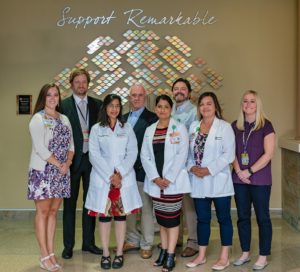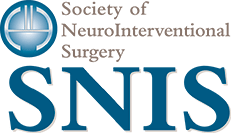
Dr. Ramakrishnan, second from left, and colleagues in Newport News, Va.
No matter the issue, awareness-raising and policy change requires champions who are on the ground seeing the problems and the solutions up close and personal. Such front-line champions offer the credibility — and in medicine, the caseloads — to demonstrate whether and how an intervention is working.
Dr. Pankajavalli Ramakrishnan, a neurointerventionalist who practices in Newport News, Va., has been a vocal advocate for improving stroke systems of care and has made real headway for patients in her community. She attributes the success to effective partnerships with first responders, as well as “having the data on our side.”
The Get Ahead of Stroke campaign team asked her to discuss her journey in giving stroke patients the best possible chance to survive and thrive following an ELVO to see if her approach might be replicated nationwide.
Here’s what she had to say:
What prompted you to choose this specialization?
I always say that the specialty picked me. Since I was a kid I was fascinated by the brain. Throughout my education, I just kept pursuing what I liked and neurointervention sort of grew up right along with me. Today, I am able to help people in their worst shape and turn that around. That’s really rewarding.
Changing systems is a difficult proposition, particularly in medicine, but you’ve had some effective collaborations. Can you talk about that?
The EMS community are some of the most enthusiastic people in medicine; they are do-ers. If you show them evidence, they will do what it takes to help a patient reach a successful outcome.
What have you learned on your journey to change the system?
This process didn’t happen in one day … we’ve come a long way. We know there are still naysayers but they have become in some ways a minority voice; it’s difficult to argue with logic.
Has it all made a difference? How is stroke care changing in Virginia?
Around us stroke continues to be a huge public health issue. People are still taking themselves to urgent care or taking a nap to feel better instead of calling 911. Awareness is an issue we have to continue to attack because we know that these patients are losing precious time.
At the same time, people in the academic and medical community are asking us to present all over the state. They see what we’ve been able to do and want to build support in their communities to make the same changes that can save patient’s lives.
Other communities in Virginia are trying to pull together their respective stakeholders in addressing access to acute stroke care. This includes the local EMS, health systems, and at the state level the Department of Health, and the legislature. We are fortunate to have the interest, and the will of so many stakeholders in bringing stroke care forward.
Can you share with us a memorable patient success story?
Each patient is unique and they each have a compelling story, but one of the earliest strokes I treated was a mom who was driving with her kids to the grandparents’ house to make Christmas cookies. She was young and healthy, but she suddenly developed numbness.
Her family had just gotten the F.A.S.T. magnet from us, which outlines the warning signs of a stroke, and put it on their fridge door. The grandmother had familiarized herself with the symptoms and recognized that her daughter was having a stroke. It saved her life.
It just goes to show that stroke can happen to anyone, any age, in any circumstance. You look at her today and you would never know she experienced a stroke. There are so many success stories. But awareness is everything.


